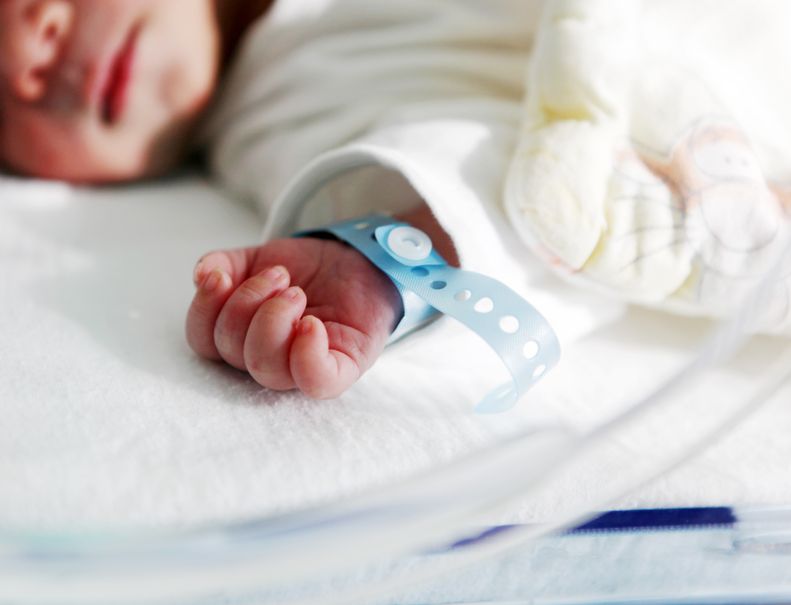Some Doctors Are Smearing C-Section Babies With Bacteria To Boost Their Health
November 7, 2018 by Justin Lehmiller

A few years ago, I came across some research reporting that the way a child is born appears to have consequences for their health. How so? Scientists believe that the bacterial composition of a woman’s vagina changes during pregnancy in order to allow certain bacteria to coat the child as it passes through the birth canal during delivery. These bacteria are thought to promote healthy development and functioning. If a child is delivered via Caesarean section (i.e., C-section), that child does not have the benefit of being exposed to those bacteria and, as a result, could potentially experience worse health outcomes than those born vaginally. However, some doctors believe there may be a way to remedy this and boost the health of C-section babies.
Before we get to that, though, let’s back up and look at the research on method of delivery and children’s health. In a 2010 study, researchers looked at the bacterial communities in several anatomic locations in a sample of nine mothers and ten infants (four of whom were delivered vaginally and six of whom were delivered via C-section) [1]. Bacterial samples were taken from the mothers shortly before giving birth; the infants were then tested within 24 hours of delivery.
It turned out that children delivered vaginally harbored bacterial communities that resembled those found inside their mothers’ vaginas. The specific bacteria shared between these children and their mothers were the good kind of bacteria—the type that assist us in digestive processes and blood clotting. By contrast, the bacterial communities found in C-section babies resembled those found on their mothers’ skin and, therefore, contained fewer of the beneficial bacteria. This research was, of course, based on a very small sample, but it suggested that delivery method just might have a big impact on the types of bacteria children acquire.
So what are the potential implications of this for health? There is a significant amount of research indicating that children delivered via C-section tend to have more health problems than children delivered vaginally. For instance, studies have found that children delivered by C-section tend to contract more infectious diseases and have more respiratory infections than vaginally-delivered children [2]. Likewise, children delivered by C-section are twice as likely to become obese as children delivered vaginally, perhaps because C-section babies do not possess the right bacteria in their guts to regulate appetite [3].
In light of these findings, doctors have begun to explore whether intentionally exposing children delivered via C-section to vaginal bacteria has the potential to reduce these health disparities. The procedure is called “vaginal seeding” and it basically involves taking bacterial swabs from the mother’s vagina and smearing them on the bodies of C-section babies shortly after birth. The goal is to help them develop microbiomes that are more similar to what they would have had if these children been delivered vaginally instead.
A preliminary study published in 2016 suggests that this procedure has potential [4]. As a result, researchers are in the process of conducting a larger-scale study right now. However, we must await the results of longitudinal studies in order to see whether the procedure brings long-term benefits and, further, to ensure safety. There are risks associated with this, including the possibility of inadvertent exposure to disease-causing bacteria and viruses, which means this isn’t something to be taken lightly or for people to try at home.
To learn more about the ongoing research in this area, check out this article over at NPR.
Want to learn more about Sex and Psychology? Click here for previous articles or follow the blog on Facebook (facebook.com/psychologyofsex), Twitter (@JustinLehmiller), or Reddit (reddit.com/r/psychologyofsex) to receive updates.
[1] Dominguez-Bello, M. G., Costello, E. K., Contreras, M., Magris, M., Hidalgo, G., Fierer, N., & Knight, R. (2010). Delivery mode shapes the acquisition and structure of the initial microbiota across multiple body habitats in newborns. Proceedings of the National Academy of Sciences of the United States of America, 107, 11971-11975.
[2] Merenstein, D. J., Gatti, M. E., & Mays, D. M. (2011). The association of mode of delivery and common childhood illnesses. Clinical Pediatrics, 50, 1024-1030.
[3] Huh, S. Y., Rifas-Shiman, S. L., Zera, C. A., Rich Edwards, J. W., Oken, E., Weiss, S. T., & Gillman, M. W. (in press). Delivery by caesarean section and risk of obesity in preschool age children: A prospective cohort study. Archives of Disease in Childhood.
[4] Dominguez-Bello, M. G., De Jesus-Laboy, K. M., Shen, N., Cox, L. M., Amir, A., Gonzalez, A., … & Mendez, K. (2016). Partial restoration of the microbiota of cesarean-born infants via vaginal microbial transfer. Nature Medicine, 22(3), 250.
Image Source: 123RF/Vladimir Nenov
You Might Also Like:

Dr. Justin Lehmiller
Founder & Owner of Sex and PsychologyDr. Justin Lehmiller is a social psychologist and Research Fellow at The Kinsey Institute. He runs the Sex and Psychology blog and podcast and is author of the popular book Tell Me What You Want. Dr. Lehmiller is an award-winning educator, and a prolific researcher who has published more than 50 academic works.
Read full bio >

